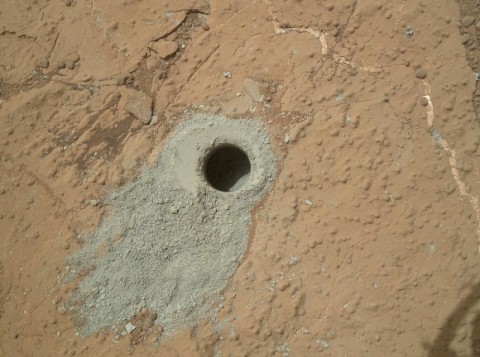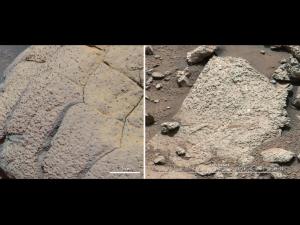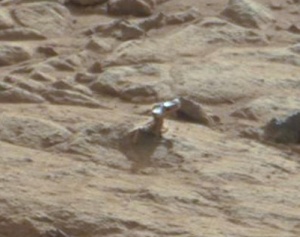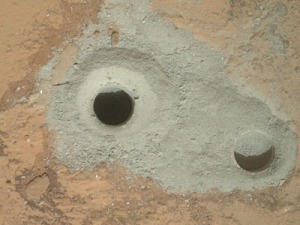
Here’s an interesting tidbit that came across my radar today: A very illusive and rare meteor shower may flare up tonight for the first time since 1930! On June 11th of that year, a small group of astronomers reported a short-lived meteor shower that was sought out in subsequent years, but never seen again. Now an astronomer named Peter Jenniskens with NASA and SETI has suggested that Earth is passing through the same comet trail it did back in 1930, and thus we could see this rare outburst, called the Gamma Delphinids, again- TONIGHT. Fortunately the moon will have set several hours before the expected peak between 2:30 and 4:30am CDT, leaving only the weather to stand in the way of getting to witness this rare event. I must point out, however, that scientists aren’t nearly as certain about this meteor shower as they are about the more reliable yearly showers such as the Leonids, Geminids, Perseids, etc… So if you’re a fan of meteor showers and have the will power to get up in the wee hours and sit outside to watch, tonight could reward your efforts with a show not seen in 83 years. (Via Universe Today and the American Meteor Society)
In other science news, more evidence of normal, habitable water on the ancient Mars surface was discovered recently. You’re probably thinking this discovery came from the Curiosity rover, but it actually came from Opportunity, one of the twin rovers that landed on Mars in 2004. Opportunity’s team sent her to investigate an interesting rock outcropping, and they found evidence of certain clay minerals that could only have formed in water that would be habitable to life as we know it. This discovery is right in line with Curiosity’s findings from February, and strongly supports the theory that Mars once had running water on the surface, and might have even supported microbial life! As Curiosity keeps trekking toward Mount Sharp, the rover will keep looking for these same minerals to help paint a clearer picture of Mars’ watery past. (Via New Scientist)
Fuck yes! That’s all I can think right now about the awesome news that came from NASA a few hours ago. The Curiosity rover has found evidence in samples of rock gathered a few weeks ago that Mars once had an environment suitable for microbial life. The rover drilled out samples from inside a rock in an area dubbed “Yellowknife Bay” by mission scientists. Those powder samples where then analyzed by specialized instruments on board, and the results showed that sulfur, nitrogen, oxygen, hydrogen, phosphorus, and carbon are all present in the rock. The range of minerals actually surprised the mission scientists, who weren’t expecting to find quite such a wide range of minerals.
“Were conditions on Mars ever suitable for life?” is one of the core questions the Curiosity mission, and now that question has been answered with a big YES. This is very exciting news, and hopefully there will be even more clues into Mars’ past discovered on this mission. For the full report, check out the press release on NASA’s website.
In other, less-exciting science news, beware of media reports claiming that fossils of diatoms (microscopic plant life) were recently found inside a meteorite. The claims come from Chandra Wickramasinghe, who is a scientist known for outlandish claims that don’t stand up to real scientific scrutiny, and are largely intended to stir controversy. This latest report claims that the fossilized diatoms were found inside a fragment of a meteorite that fell over Sri Lanka in 2012. Except they don’t prove that a) the sample was from said meteorite, or b) that the sample was from a meteorite at all! Also diatoms are EVERYWHERE on earth, and can very quickly contaminate any meteorites that make it to the surface. Thankfully there are skeptics like Dr. Phil Plait out there who regularly and thoroughly debunk such things when they pop up. Head over to his blog Bad Astronomy to read more on how Wickramasinghe’s experiments were flawed, and why his claims just don’t hold water.
Dennis Tito to send a married couple to Mars in 2018, in a spaceship lined with their own poop!
March 1, 2013
Billionaire Dennis Tito, who is known as the first-ever space tourist, unveiled on Wednesday Inspiration Mars, a plan to launch two people, likely a married couple, on mission to Mars in 2018. The best part: the spaceship in which they travel will be lined with the couple’s own shit! This whole idea sounds incredibly far-fetched, and I even mentioned my doubt of its feasibility last week when the “teaser” press release about the press release made some headlines. It still sounds kinda crazy because of the part about the shit (I’ll get to that in a minute), but they left out one really important detail last week- the couple won’t actually be landing on Mars, just flying around it once in a spacecraft. Actually landing on Mars is really, REALLY, REALLY hard in terms of engineering and feasibility, but just sending a couple of people on a slingshot around it? Not quite as hard. Tito is very committed to making it happen, and is even prepared to fund the first two years of mission development, so this could work. More details on the project can be found in this New Scientist article.
Now, as far as the shit goes… it’s really not as crazy as it sounds. One of the biggest challenges to deep space exploration like this is that the crew members will get bombarded with genetic mutation-inducing cosmic radiation. We’re talking X-rays and Gamma rays, along with the ever-present solar wind of ions. It’s practically a death sentence if you can’t shield the crew from all that, and as it turns out, dried up human waste is actually pretty good at just that! Rather than just jettison it into space, why not seal it up in (fully sanitary, of course) bags and line your spaceship with it to add to the shielding of your spaceship? Astronauts onboard the ISS are already using a reactor system that recycles the water from their urine, and gross as it may seem, this mission will do that AND recycle the moisture from their poop. When you’re going on a 500 day mission to Mars, you have to be very resourceful. For more on the poop shield, see this other article on New Scientist.
In other Mars-related news, unfortunately the Curiosity Rover has suffered a computer glitch which has forced the team to switch everything over to the rover’s backup computer. In short, they will slowly reboot all the rover’s systems from the backup computer, make sure everything checks out, and continue with normal operations. Meanwhile, another team will investigate the problem with the primary computer and attempt to fix it so that it’s operational and can be used in case the backup computer fails. For more, check out this post on Universe Today.
Mars rover Curiosity updates
February 14, 2013
It’s been a hot minute since I mentioned the Mars rover Curiosity. She’s been slowly but surely working her way across Gale Crater, stopping to take photos along the way and investigate anything interesting she comes across. Recently she came across this bizarre-looking rock protrusion that looks a bit like a shiny door handle or knob:
It was a pretty interesting and puzzling find, but NASA scientists think they have an explanation. Indeed, it’s not a knob or hood ornament, nor is it made by aliens. A much more logical explanation is uneven weathering and erosion. For the full details head over to Universe Today. But in short, Ronald Sletten from the Mars Science Laboratory team at NASA/JPL explained in a press release that the object is a small part of the rock that is different in composition from the rest. The shiny part is made up of a harder type of rock than its surroundings. Since the surface of Mars is home to lots of dust/wind storms, there is quite a bit of wind erosion, and the softer surrounding rock erodes aways much faster than the harder rock. The shininess is also a by-product of erosion- certain types of rocks have a tendency to become smooth and shiny from erosion rather that just being blown away. NASA also posted a PDF with some good photos comparing the Mars image to similar phenomena on Earth. What I’m wondering is- what is that harder part of the rock made of? Why is there? Are there any other formations like it nearby? I know that on earth some volcanic rocks have a smooth & shiny appearance, so could this be a chunk of volcanic rock that was flung from an eruption and landed in water, then moved to its current location by fast-moving water and deposited in a muddy area that subsequently hardened into sedimentary rock? Maybe more theories will come out soon.
In other Curiosity news, the final instrument yet to be used/tested was the percussive rock drill. The drill was successfully tested and then used on Feb. 8th to drill the hole seen on the left in this image:
The rover has now successfully tested all of her science instruments and everything is working perfectly. A sample of the pulverized rock was taken, and will be analyzed in the days to come. This rock is suspected of having been altered or eroded by flowing water on the surface many millions of years ago. I’m looking forward to seeing what they find to confirm (or deny) this theory and what else is learned about Mars’ watery past.
NASA scientist mentions Instagram, proves science is hip (and some other science-y tidbits)
December 6, 2012
It’s been a very crazy week, and I know this may be old news already for some of you, but I had to post about NASA’s announcement on the Curiosity mission findings that caused such an uproar on the internet a few weeks back. For a detailed explanation of what was found and what it means, check out this article on Universe Today. In short, this was the first time all of Curiosity’s instruments had been used in concert together, and the consistency of the results was exciting. It pointed to organic compounds in the Martian soil, but they can’t say for sure that the Carbon in those compounds is of Martian origin. First they have to determine if the Carbon is actually from Mars, and not a contaminant from earth air trapped in the instruments, then they have to determine whether the Carbon is from a biological or non-biological source. There are lots of possibilities that must be ruled out before we will know for sure what’s in the soil, and where it came from. At the announcement, Curiosity Project Scientist John Grotzinger is quoted as saying, “We’re doing science at the speed of science. But we live in a world that’s sort of at the pace of Instagrams. The enthusiasm that we had, that I had, that our whole team has about what’s going on here, I think it was just misunderstood.” That was after he was questioned about the wild speculation that resulted from his comments in an NPR story about a possible “Earth-shaking” discovery by Curiosity. I just love that a NASA scientist compared the speed of science to the “pace of Instagrams.” Instagram and Science! In the same sentence! That must mean science is hip, right? RIGHT?
In other NASA-related news, it was announced on Tuesday that NASA will build and launch in 2020 another Mars rover very similar to Curiosity. While that may not be the most exciting thing to hear, it shows that NASA is building confidence in its abilities to do mind-blowing things like land a nuclear-powered, car-sized roving science lab on another planet with a rocket-powered sky crane. The more we learn about Mars, the closer we get to putting a man there. Who knows, maybe a prime objective of this new mission will be to actually look for signs of past or current life. No mission to Mars yet has actually had that as an objective. For more on this new mission read this article on New Scientist.
While these next two items aren’t necessarily science-y, they are quite awesome:
- This Russian blog posted a collection of fascinating Autochrome color photographs of Paris taken just before the first World War. They’re some of many early color photos taken by a team of photographers commissioned by French philanthropist Albert Kahn. (Via Kottke)
- Filmmaker and photographer Cy Kuckenbaker created this mesmerizing time-compressed footage of planes landing at San Diego’s airport. Do yourself a favor and put it on fullscreen HD. (Via Kottke)
Mars Rover Curiosity may have made an “earthshaking” discovery
November 21, 2012
NASA scientists have created lots of buzz over the past two days because of an NPR story in which Curiosity’s chief investigator John Grotzinger is quoted as saying the latest round of data from Curiosity’s soil analysis instrument is “gonna be one for the history books.” That’s all the information we’ll get, though, at least for a few weeks. While the scientists are very excited about what they’re seeing, they have to run multiple tests and replicate the results in order to be sure the initial interesting result is not a fluke or a glitch. The instrument in question (SAM) looks for organic molecules in the Martian soil, which are the basic building blocks of life as we know it. While none of the instruments on Curiosity can directly detect the presence of life on Mars, they CAN detect basic organics. Even a confirmation of organic molecules would be a huge, MONUMENTAL discovery.
In the past, scientists that have “blown their load” by prematurely announcing exciting results have been burned by it, so this team really wants to be sure of the accuracy and interpretation of their data before going public. One needn’t look further than NASA’s Martian meteorite fossil fiasco in 1996, or their arsenic-based life announcement in 2010 to know that letting your excitement/amazement at your discovery get in the way of un-biased, fact-based analysis can be disastrous.
I certainly hope that the results they’re guarding/confirming point to organic molecules in the soil they’ve analyzed. Curiosity’s findings thus far prove that large amounts of water once flowed on the surface, right where the rover is exploring. It would make sense to me that some form of basic life once existed there. It also wouldn’t surprise me if one day we discover that the DNA from life there mixed with DNA from life here, and that we’re all part Martian, as the idea of panspermia suggests. Those discoveries are likely years or even decades away from happening, but this is still a very exciting time for science!
This will be my last post before Thanksgiving, so have a happy one!
Zap! Curiosity shoots soil on Mars with laser
October 24, 2012
This bizarre-looking animation is not some kind zit popping (which is the first thing that came to mind when I first saw it), but in fact the hole left behind in some Martian soil after the Curiosity rover zapped with a high-powered laser in order to study its chemical composition. Curiosity has been steadily traveling across its home, Gale Crater, and doing lots of good science along the way. This latest experiment zapped the soil 30 times to heat it up to a temperature so hot that it glows. Each element glows at a specific color of light when heated to those temperatures, and an instrument called a spectroscope reads those colors emitted and can discern exactly what elements the glowing material is made of. Curiosity also recently took several scoops of soil from the surface which will be delivered to various onboard instruments this week, which will directly examine its mineral makeup. I’m looking forward the release of those results, as they could tell us whether or not Mars could’ve supported life in the past. But I couldn’t resist posting this bizarre animated GIF… just keep staring at that for a while.
(Via Bad Astronomy and NASA)
Just a quick roundup of some news and updates in the science world:
- Felix Baumgartner’s supersonic, record-setting skydive attempt was delayed until Tuesday morning due to weather concerns. The balloon launch is scheduled for around dawn, so I’ll try to tune into the interwebs tomorrow morning to see how it goes. More at Discovery News.
- Space X successfully launched its first official, non-demonstration mission to the ISS last night. The launch was successful despite the Falcon 9 rocket losing one of its 9 main engines about 90 seconds into the launch. The faulty engine was immediately shut down and the onboard computer recalculated the flight trajectory, adding the necessary burn time to get its Dragon capsule to the correct orbit to rendezvous with the ISS. Phil Plait at Bad Astronomy has the full deets.
- The Mars Rover Curiosity successfully scooped up a sample of soil and agitated it in a bin this past weekend. Instruments on board will soon run a series of tests to determine if the soil could have supported microbial life in the past. Check out this video created from a couple hundred photos taken of the sample as it was being agitated.
Scientists create the iSquid/more eye candy from Mars
August 29, 2012
From the department of Holy Fucking Shit Nature Is Awesome: Scientists have hooked up squid skin to an iPod and made its pigment cells dance in time to Cypress Hill. They took the electronic waveform of the music and turned it into tiny electric impulses that caused the pigment cells, called chromatophores, to react in time with the music. The result is utterly fascinating:
(Via Kottke.org)
The MSL team at NASA has been as busy as ever testing, calibrating, and tweaking Curiosity’s cameras and instruments. A lot of great things have been accomplished over the last week or so, but two things are most interesting to me. The first recorded song ever to be beamed back from another planet was a song specially composed and recorded by will.i.am of the Black Eyed Peas. The song was called “Reach for the Stars.” While I’m not really a Black Eyed Peas fan, I’m really happy that such a big-name pop culture figure is trying to get kids more involved and interested in Science, Technology, Engineering, and Math (STEM). The other bit of news from Curiosity that really impressed me is this new image from the rover’s 100mm MASTCAM:
This photo, to me, is much more interesting to look at than the other, wider images taken thus far. The reason is that it’s using a 100mm telephoto lens, which makes the scale and depth of the scene more prominent. Also, the photo was taken near sunrise or sunset when the angle of sunlight was low, which makes the jagged rock formations on Mt. Sharp more prominent and dramatic. Notice how there are many flat layers of rock exposed on the side of the mountain? They look just like the layers of bedrock along the sides of canyons and mountains here on Earth! The layers you see on Earth were formed by water, when sediments collected on the floor of oceans and lakes and eventually hardened into rock over millions of years. Therefore, scientists are pretty sure the rock layers seen in this photo on Mars were formed the same way, at the bottom of bodies of water on the surface millions of years ago. The big question we still have to answer is, what caused the water to disappear? Also, was there any life in or around that water millions of years ago? I can’t think of anything more exciting than answering those questions about Mars’ past.








